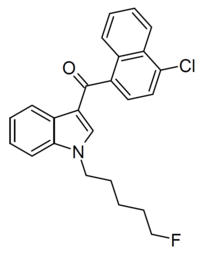
Photo from wikipedia
The effects of nanoparticles (NPs) on microbiota homeostasis and their physiological relevance are still unclear. Herein, we compared the modulation and consequent pharmacological effects of oral administration of (−)-epigallocatechin-3-gallate (EGCG)-loaded… Click to show full abstract
The effects of nanoparticles (NPs) on microbiota homeostasis and their physiological relevance are still unclear. Herein, we compared the modulation and consequent pharmacological effects of oral administration of (−)-epigallocatechin-3-gallate (EGCG)-loaded β-cyclodextrin (β-CD) NPs (EGCG@β-CD NPs) and EGCG on gut microbiota. EGCG@β-CD NPs were prepared using self-assembly and their influence on the intestinal microbiome structure was analyzed using a metagenomics approach. The “Encapsulation efficiency (EE), particle size, polydispersity index (PDI), zeta potential” of EGCG@β-CD NPs were recorded as 98.27 ± 0.36%, 124.6 nm, 0.313 and –24.3 mV, respectively. Surface morphology of EGCG@β-CD NPs was observed as spherical. Fourier-transform infrared spectroscopy (FT-IR), X-ray diffraction (XRD) and molecular docking studies confirmed that EGCG could be well encapsulated in β-CD and formed as EGCG@β-CD NPs. After being continuously administered EGCG@β-CD NPs for 8 weeks, the serum cholesterol (TC), low-density lipoprotein cholesterol (LDL-C) and liver malondialdehyde (MDA) levels in the rats were significantly decreased, while the levels of catalase (CAT) and apolipoprotein-A1 (apo-A1) in the liver increased significantly in the hyperlipidemia model of rats, when compared to the high-fat-diet group. Furthermore, metagenomic analysis revealed that the ratio of Verrucomicrobia/Bacteroidetes was altered and Bacteroidetes decreased in the high-fat diet +200 mg/kg·bw EGCG@β-CD NPs group, while the abundance of Verrucomicrobia was significantly increased, especially Akkermansia muciniphila in rat feces. EGCG@β-CD NPs could be a promising EGCG delivery strategy to modulate the gut microbiota, enhancing its employment in the prevention of hyperlipidemia.
Journal Title: Molecules
Year Published: 2022
Link to full text (if available)
Share on Social Media: Sign Up to like & get
recommendations!